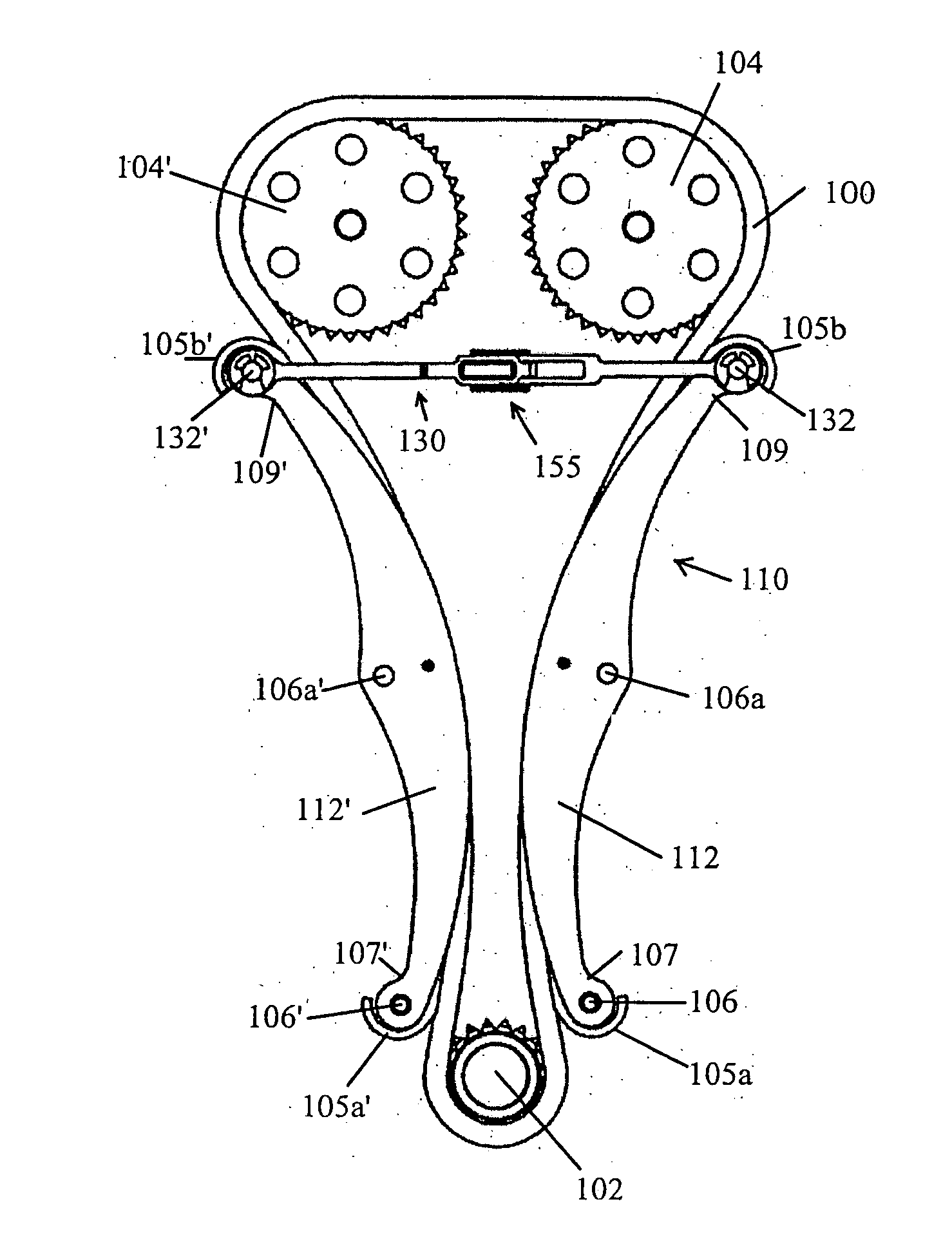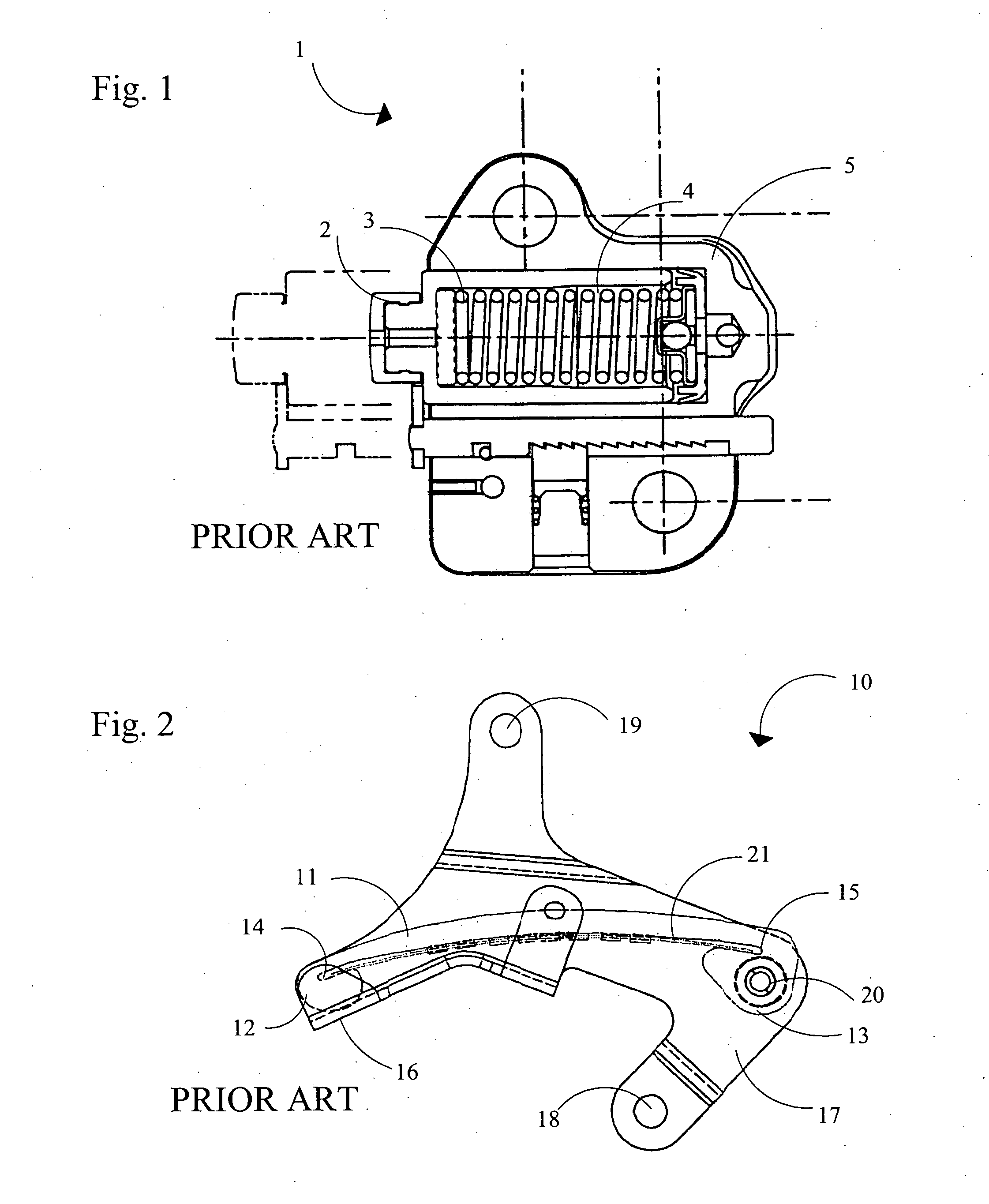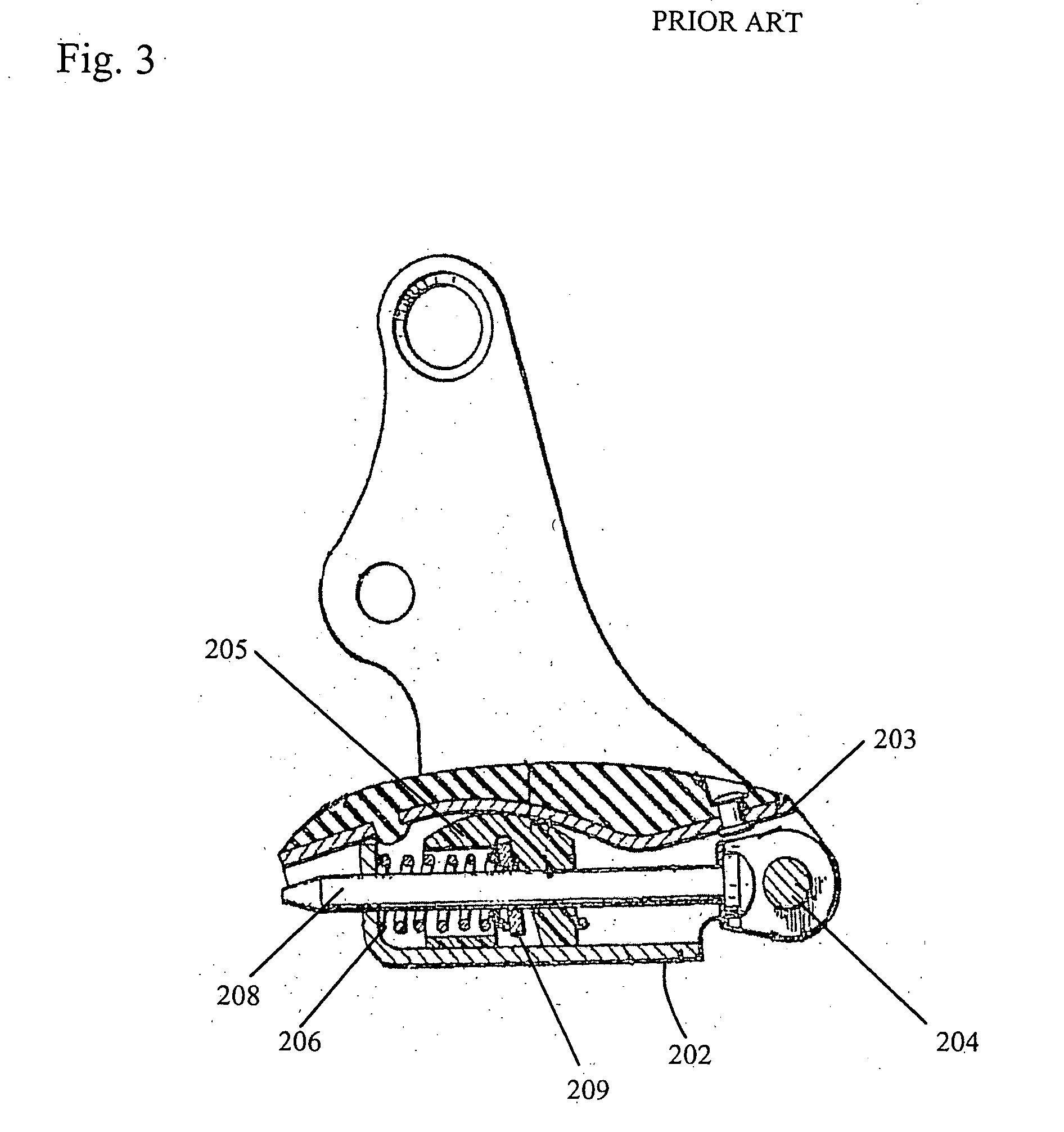Mechanical strap tensioner for multi-strand tensioning
a multi-strand tensioning and mechanical technology, applied in the direction of belts/chains/gearrings, mechanical devices, belts/chains/gears, etc., can solve the problems of inoperable engine, fluctuations in the tension of any given portion of the chain, etc., and achieve the effect of increasing slack or wear conditions
- Summary
- Abstract
- Description
- Claims
- Application Information
AI Technical Summary
Benefits of technology
Problems solved by technology
Method used
Image
Examples
Embodiment Construction
[0027] Referring to FIG. 5, the tensioner 110 of the present invention is operatively engaged with a closed loop power transmission system of an internal combustion engine. The power transmission system contains a driving sprocket 102 and at least one driven sprocket 104, 104′. Power from the engine's drive shaft is transmitted from the driving sprocket 102 to the driven sprockets by means of a chain 100 or drive belt. Most commonly used with internal combustion engines are chain drives. Proper tension must be applied to the chain 100 at all times in order to prevent the jumping of the sprocket teeth by the chain during slackening of any portion of the chain during operation or as a result of increasing wear of the components over time.
[0028] The tensioner 110 includes a tensioning arm 112 that is operatively engaged with the outer surface of one of the strands of chain between the driving sprocket 102 and one of the driven sprockets 104. The second tensioning arm 112′ of tensioner...
PUM
 Login to View More
Login to View More Abstract
Description
Claims
Application Information
 Login to View More
Login to View More - R&D
- Intellectual Property
- Life Sciences
- Materials
- Tech Scout
- Unparalleled Data Quality
- Higher Quality Content
- 60% Fewer Hallucinations
Browse by: Latest US Patents, China's latest patents, Technical Efficacy Thesaurus, Application Domain, Technology Topic, Popular Technical Reports.
© 2025 PatSnap. All rights reserved.Legal|Privacy policy|Modern Slavery Act Transparency Statement|Sitemap|About US| Contact US: help@patsnap.com



